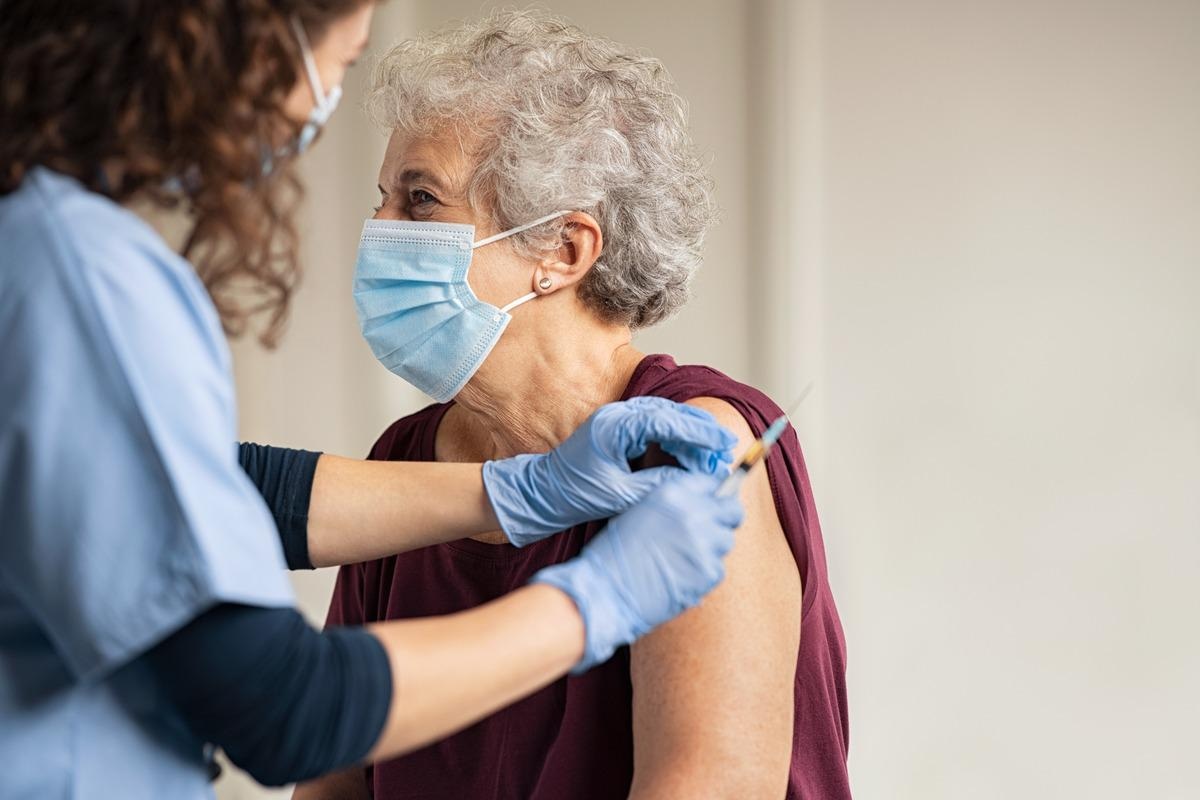In a recent study posted to the journal Current Research in Translational Medicine, researchers illustrated that vitamin D status and age influence antibody (Ab) response following the initial dose of coronavirus disease 2019 (COVID-19) vaccination.
 Study: Age and vitamin D affect the magnitude of the antibody response to the first dose of the SARS-CoV-2 BNT162b2 vaccine. Image Credit: Rido/Shutterstock
Study: Age and vitamin D affect the magnitude of the antibody response to the first dose of the SARS-CoV-2 BNT162b2 vaccine. Image Credit: Rido/Shutterstock
Background
Severe acute respiratory syndrome coronavirus 2 (SARS-CoV-2) vaccination is the most critical strategy to halt the ongoing global COVID-19 pandemic. In clinical studies, COVID-19 vaccines approved for human use across the world showed more than 90% effectiveness against SARS-CoV-2 clinical illness. COVID-19 vaccinations have minimized infection-related mortality and hospitalizations to a greater extent in the real world.
The majority of authorized COVID-19 vaccines, such as Pfizer-BioNTech (BNT162b2) SARS-CoV-2 vaccines, follow a two-dose method. The United Kingdom (UK) government prolonged the time between the two vaccine doses from three to 12 weeks to allow broader groups of people to get the initial COVID-19 vaccine dose.
Most existing studies have only looked at the serological response at a single timestamp after the first dose of COVID-19 vaccination or the Ab response for up to three weeks. Much research focuses on the qualitative presence or absence of Abs, and only a few examine the quantitative Ab response for a prolonged time. Furthermore, most investigations do not look at the factors that influence the Ab responses' magnitude during COVID-19 vaccination.
About the study
In the current study, the researchers reported the immunogenic potential of the initial dose of SARS-CoV-2 vaccination, including the impact of vitamin D status and age on these levels for more than eight weeks. For this, the team followed a cohort of 105 BNT162b2 single-dose vaccinated healthcare workers (HCWs) at the Norfolk and Norwich University Hospital, UK, for eight weeks. The correlation between post-vaccination immunoglobulin G (IgG) response and age, 25-hydroxyvitamin D (25(OH)D) status, and other demographics were studied. Before enrollment, all subjects submitted written informed consent.
Blood samples were procured from HCWs who received the initial dose of the BNT162b2 vaccine during January and February 2021. Ab generation was assessed one week before immunization, weekly during the first four weeks post-vaccination, and a final measurement at the eighth week. A newly designed and validated test (Abbott Alinity i system Immunoassays) was used to quantify Ab concentrations. Serum vitamin D levels were evaluated at the start of the study using liquid chromatography with tandem mass spectrometry (LC-MS/MS) and 1,25-dihydroxycholecalciferol (1,25(OH)2D) by immunoassays.
In addition, self-declared demographic features (ethnicity, age, gender), clinical characteristics (health problems, height, weight, present medication), and the occurrence of SARS-CoV-2 symptoms during the last six months were all collected using a questionnaire.
Results
The results showed that of the 105 HCWs, six and two subjects were excluded from the study as they had measurable Ab baseline and did not seroconvert following vaccination, respectively. Among the 97 eligible HCWs, the mean age was 40.9 years, 78.4% were females, mean body mass index (BMI) was 26.4%, 89.7% were White, and the mean 1,25(OH)2D was 108.2 pmol/L.
SARS-CoV-2 vaccination in 97 HCWs resulted in an Ab response that peaked at 3.2 weeks after immunization and waned afterward. Peak IgG concentrations were inconsistent and spanned between 161 to 12020 AU/mL. The anti-SARS-CoV-2 spike (S) Ab concentrations did not alter much at the first week post-vaccination but rose rapidly and considerably after that. At eight weeks, the anti-SARS-CoV-2 Ab levels were still positive.
The peak concentration of IgG antibodies was found to be inversely correlated with age. Although the Ab peak was initially higher in those younger than 40 years, Ab concentrations were comparable across all age groups at eight weeks following vaccination. The anti-SARS-CoV-2 nucleocapsid (N) Ab was not detectable in any of these subjects, indicating that the IgG response was not caused by natural infection.
Furthermore, vitamin D status had a substantial impact on vaccination response. On average, people with 25(OH)D value above 50 nmol/L had a 29.3% higher Ab response peak value. The waning of Ab response after peaking also correlated with the 25(OH)D concentrations. Also, there was no other variable that had a substantial impact on Ab levels.
Conclusions
According to the authors, this is the first study quantifying antibody levels at various timestamps following the initial dose of Pfizer-BioNTech COVID-19 vaccination in HCWs without prior history of SARS-CoV-2 infection. The study findings indicated that the SARS-CoV-2 BNT162b2 vaccine's initial dose generated Ab levels that stayed positive beyond eight weeks.
The Abs peak was heightened in younger participants and those with 25(OH)D levels higher than 50 nmol/L. Vitamin D levels are at their peak after sun exposure or oral supplementation of 400 to 1000IU/day. These inferences should be considered during the COVID-19 booster vaccination programs.
To recapitulate, the present study infers that anti-SARS-CoV-2 Ab responses were similar across all age groups in HCWs following eight weeks of first dose COVID-19 vaccination, and vitamin D status had a significant impact on the Ab levels. The study highlights the need for planning the SARS-CoV-2 booster vaccination campaigns following sunlight exposure or after oral vitamin D supplementation.